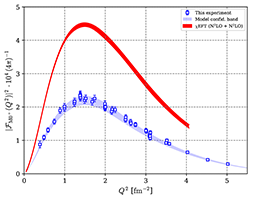 Prof. Dr. Concettina Sfienti was awarded the Academy Prize of Rhineland-Palatinate to honour her outstanding and exemplary achievements in teaching and research.
Prof. Dr. Concettina Sfienti was awarded the Academy Prize of Rhineland-Palatinate to honour her outstanding and exemplary achievements in teaching and research.
The award ceremony took place at the Akademie der Wissenschaften und der Literatur Mainz
on 30 November 2023.
The welcome addresses by Prof. Dr.-Ing. Reiner Anderl, President of the Akademie der Wissenschaften und der Literatur Mainz and Clemens Hoch, Minister of Science and Health of the Federal State of Rhineland-Palatinate were followed by a laudation by Prof. Dr. Margret Wintermantel, Chairperson of the jury for the Academy Prize.
The award winner, Prof. Sfienti, contributed to the evening with her talk on "Sternenstaub im Bauch: Kosmische Rezepte für Erdlinge" giving an overview of the origin of the elements found in the universe.
Music by Zih-En Wei (violoncello) and André Dolabella (piano) provided a festive backdrop to the evening.



 AG Sfienti is currently in Bormio, Italy, participating in the International Winter Meeting on Nuclear Physics
AG Sfienti is currently in Bormio, Italy, participating in the International Winter Meeting on Nuclear Physics Prof. Dr. Concettina Sfienti was awarded the Academy Prize of Rhineland-Palatinate to honour her outstanding and exemplary achievements in teaching and research.
Prof. Dr. Concettina Sfienti was awarded the Academy Prize of Rhineland-Palatinate to honour her outstanding and exemplary achievements in teaching and research. Our next
Our next  Starting on Monday, 22 May, we will be having our beam time at A1 until Monday 5 June 2023.
Starting on Monday, 22 May, we will be having our beam time at A1 until Monday 5 June 2023. At the Mainz particle accelerator MAMI, the A1 collaboration has systematically measured the excitation of an α-particle, the nucleus of a 4He atom, from its ground state to the first excited state in a new way and with unprecedented accuracy as part of
At the Mainz particle accelerator MAMI, the A1 collaboration has systematically measured the excitation of an α-particle, the nucleus of a 4He atom, from its ground state to the first excited state in a new way and with unprecedented accuracy as part of 